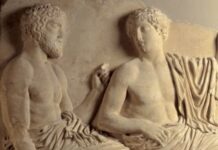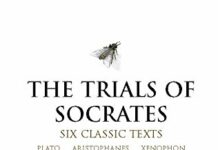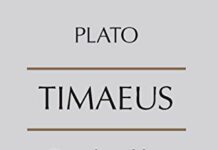
Ebook Info
- Published: 2038
- Number of pages: 390 pages
- Format: PDF
- File Size: 21.84 MB
- Authors: Plato
Description
A reprint of the Routledge edition of 1935.
User’s Reviews
Editorial Reviews: Review . . . one of the masterpieces of classical scholarship. . . . Contemporary work on the Timaeus will inevitably take Plato’s Cosmology as its starting point. –Charles H. Kahn, University of PennsylvaniaAn indispensable storehouse of information and analysis–essential reading nowadays just as in 1935, when it first appeared. . . . Plato’s Cosmology continues to be the constant reference point of any serious study of the Timaeus. –John M. Cooper, Princeton University
Reviews from Amazon users which were colected at the time this book was published on the website:
⭐For the non-expert reader of Plato, this is a very good text for working through Timaeus. Actually, it may be useful to expert readers as well, but I wouldn’t know about that, being firmly situated in the non-expert camp. Though some scholars may take exception to certain parts of Cornford’s translation and interpretation, for those of us trying to get through it for the first time and on our own, this is still an exceptional guide. By the way, for an alternative translation and interpretation, the reader may want to check out Kalkavage’s translation (Focus Philosophical Library), it is very good (I would rate it 5 stars also) and has some extremely helpful appendices for understanding references to music, astronomy, and geometry.
⭐This is an excellent and invaluable reference book for Plato’s Timaeus. If you are reading Timaeus you MUST have this book. It contains line-by-line commentary, and also, most valuable, some very helpful illustrations (example: illustration of the human body as Timaeus explained it). I would, however, balance this book with other books that attempt to place Timaeus within the rest of Plato’s works. I recommend, for example, Peter Kalkavage’s Timaeus. There, he attempts to link Timaeus and Republic.
⭐Excellent introduction, notes and translation.
⭐Professor Cornford’s translation with running commentary is definitive.
⭐The two biggest topics in the Timaeus are astronomy and the elements of bodies, which are constructed using triangles and the tetrahedron, octahedron, icosahedron, and cube. I would like to see a translation of the Timaeus that uses it as a way to introduce all the astronomy that appears in the dialogue. Introducing the astronomy does not mean just talking in words about spheres or the zodiac or the ecliptic, but actually explaining how these were used by astronomers. Cornford has much to say, but to someone who has not learned any Greek astronomy his commentary will be opaque and hard to use. I didn’t know the astronomy well enough to readily understand Cornford’s explanations. I plan to learn more classical Greek astronomy, perhaps using Evans’
⭐, and then read Waterfield’s translation of the Timaeus
⭐.Before reading this you should have read the Republic and know some classical Greek natural philosophy, mathematics, and astronomy. Although Cornford’s commentary makes the dialogue staccato, I am glad for it because I wouldn’t otherwise have understood much of what Plato says. The Timaeus and the Parmenides are the two dialogues of Plato that one needs commentary to understand; the Parmenides demands the commentary because so much of what is happening depends on the original language, and the Timaeus demands the commentary because of all the things the reader is supposed to be familiar with.The following is a list of topics I kept while reading the dialogue: theory of Forms 27d-28a, 51a-52a; harmonics 35b-36b; time 37c-38e, 39b-e; vision 45b-46c, 67c-68d; space 52b; surfaces 53c; weight 62d-63e; sound 67a-67c; physiology 70c-79e, 80d-86a; antiperistasis 79e-80c.
⭐This is basically a scholarly paragraph-by-paragraph commentary on the Timaeus. It’s really good for what it is, but I don’t recommend it as your first introduction to the Timaeus — rather, I recommend Waterfield:http://www.amazon.com/Timaeus-Critias-Oxford-Worlds-Classics-ebook/dp/B006NTMD16A problem with using Cornford as an introduction is that he comments on everything, and it’s hard to figure out what the main themes are. I tried reading Cornford as an intro and gave it up, but once I’d read Waterfield I found Cornford extremely helpful both in elucidating passages further than Waterfield does, and in interpreting passages Waterfield doesn’t cover. So if you’re looking to learn about the Timaeus, I’d suggest Waterfield first and Cornford second (or Cornford alongside Waterfield).
⭐Readers of any of Plato’s works are bound to feel they might profit from various commentaries. His Timaeus, in particular, may be said to elicit such a hope because of number and intricacy of its details. Cornford’s running commentary is arguably the best suited to fulfill this desire: it helps make clear the integrity of the dialogue as a whole and illumines the specific points along the way. Although this work is certainly dated, originally published in 1937, it is certainly one of the best full commentaries on the Timaeus.
⭐A cosmology is a narrative concerning the creation of the universe. Many ancient philosophers have written or elaborated this kind of work. The Platonic dialogue Timeus is an account of the work of the creator god (called the demiurge – or artisan) sculpting the chaotic material world in accordance with the immaterial model of the Ideas. But the text was written in a very hermetic and symbolic language, making its interpretation difficult or even impossible without the knowledge of the references and symbols used by Plato. This book is a complete translation of the text followed by a comprehensive commentary explaining in detail every passage. Francis MacDonald Cornford is one of the most important ancient philosophy scholars, and this work reveals his deep knowledge of Platonic and Greek thought. It is a must have for anyone interested in greek and Platonic philosophy.
⭐Hooray for Hackett. Probably, until it is superceded, the standard work on Plato’s cosmology,to the with respect to the most cosmological of the dialogues: the Timeaus, even if the title does not do justice to the extent to which the commentary covers the translation – in Zeyl’s translation (also Hackett) such commentary precedes the translation of the text; here, the commentary, insightful as it often, is includes the observations of other commentators – Proclus, just being one, which undoubtedly enriches the reading of the translation as a whole. For example the nature of Necessity in the beautiful interval between parts 2 and 3, which Plato says we must seek the Divine and Necessity. (68E – 69)A reading of the Fragments of Parmenides might suggest that Necessity is the force or power of the law of nature (of being), in that ‘being’ is bound by it – raising analogous questions to those pertaining to what is outside the receptacle in the Timeaus. Cornford does not even seek parallels such as those of the Shakti in Vedanta; he simply says ‘seek the causes’, which means that the injunction is teleological rather than ontological; seeking the divine is clearly ontological. More evidence, if we needed any of the subtlety of Plato’s genius. While this can be read as part of the commentary, it is more likely to be referred to over a particular passage of interest. Even if one has Zeyl’s excellent translation, this takes it a lot, lot further.
Keywords
Free Download Plato’s Cosmology: The Timaeus of Plato 2nd Edition in PDF format
Plato’s Cosmology: The Timaeus of Plato 2nd Edition PDF Free Download
Download Plato’s Cosmology: The Timaeus of Plato 2nd Edition 2038 PDF Free
Plato’s Cosmology: The Timaeus of Plato 2nd Edition 2038 PDF Free Download
Download Plato’s Cosmology: The Timaeus of Plato 2nd Edition PDF
Free Download Ebook Plato’s Cosmology: The Timaeus of Plato 2nd Edition




